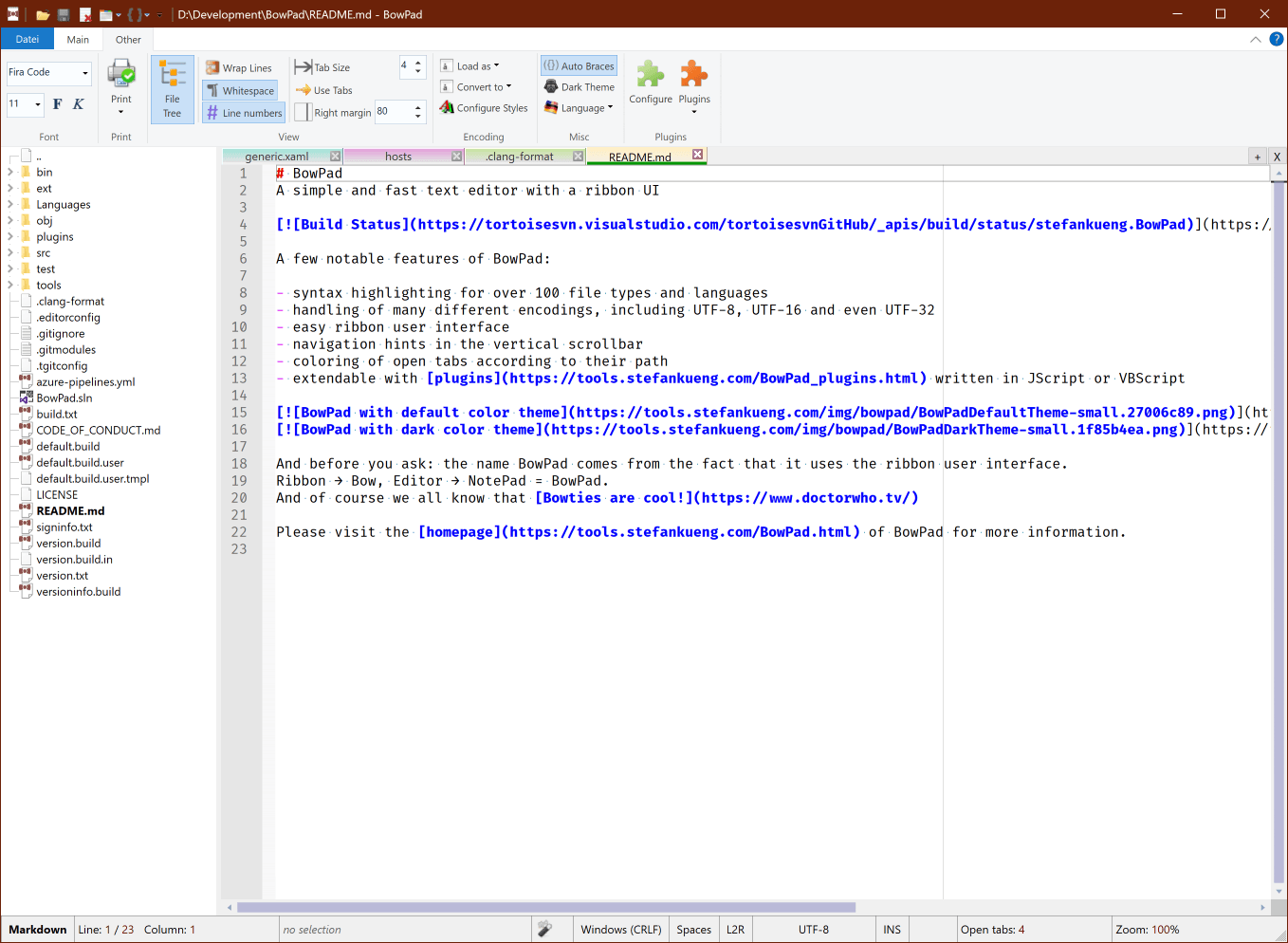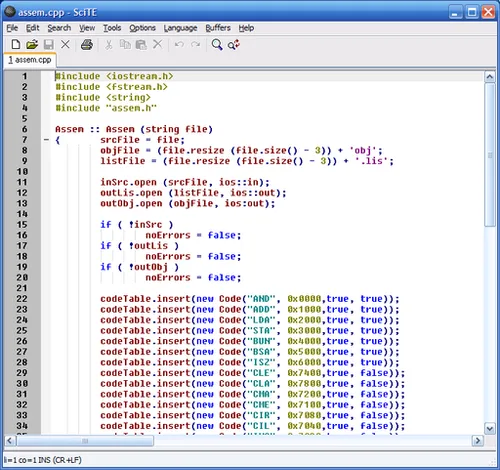This post is more for me than anyone else. It’s a Scite properties file I keep around to configure the editor. From time to time I load the Scite text editor when working at client sites. I load it a lot less now since it has developed more oddities than I care to put up with, but I recently loaded it on Ubuntu 14.04 at a client site and was once again faced with the daunting task of configuring it. Just finding the names you need to put in your user properties file can take a long time.
While Scite can be handy, you really need to devote your life to it. The software reminds me of the early days when Linux software in general was attempting to move from “expert friendly” to user friendly. Products added support for a mouse along with a couple of tool bars, but just couldn’t give up mass quantities of scripting. In its defense, as I recall Scite was developed as a proof of concept for the LUA language so the customization via configuration and LUA scripts is understandable. Scite just didn’t seem to get the community behind it that GitHub got behind the Atom text editor.
One thing which always seems to needlessly chew up my first half hour after installing is setting up my user.properties file so it works like my other editors. I don’t use this editor enough to carry one around on a thumb drive with me. Since I keep running into this problem and the on-line configuration documentation is scattered I’m posting one here for safe keeping. It is by no means complete, but enough to make the editor usable.
Properties File
save.recent=1
save.session=1
session.bookmarks=1
session.folds=1
save.position=1
save.find=1
open.dialog.in.file.directory=1
line.margin.visible=1
line.margin.width=6
# Indentation
tabsize=4
indent.size=4
use.tabs=0
# Give symbolic names to the set of fonts used in the standard styles.
if PLAT_WIN
font.base=font:Liberation Mono,size:9.4
font.small=font:Liberation Mono,size:8
font.comment=font:Liberation Mono,size:10.1
font.code.comment.box=$(font.comment)
font.code.comment.line=$(font.comment)
font.code.comment.doc=$(font.comment)
font.code.comment.nested=$(font.comment)
font.text=font:Bitstream Vera Serif,size:11
font.text.comment=font:Bitstream Vera Sans,size:9
font.embedded.base=font:DejaVu Sans Mono,size:9
font.embedded.comment=font:Comic Sans MS,size:8
font.monospace=font:Liberation Mono,size:8.9
font.vbs=font:Candara,size:10
if PLAT_GTK
font.base=font:Liberation Mono,size:10
font.small=font:Liberation Mono,size:8
font.comment=font:Liberation Mono,size:9
font.code.comment.box=$(font.comment)
font.code.comment.line=$(font.comment)
font.code.comment.doc=$(font.comment)
font.code.comment.nested=$(font.comment)
font.text=font:DejaVu Serif,size:10
font.text.comment=font:Serif,size:9
font.embedded.base=font:Serif,size:9
font.embedded.comment=font:Serif,size:9
font.monospace=font:DejaVu Sans Mono,size:9
font.vbs=font:DejaVu Sans Mono,size:9
save.all.for.build=1
save.on.deactivate=1
save.on.timer=20
check.if.already.open=1
temp.files.sync.load=1
save.check.modified.time=1
title.full.path=1
title.show.buffers=1
pathbar.visible=1
#caret.line.back=#FFFED8
caret.line.back=#F7F36D
Hackable Editors
Don’t get me wrong, the Scintilla library used to create SciTE is great. I try to help with it from time to time, even used a port of it creating RedDiamond. It’s just that, for ease of use, menus are nicer. There is a not-good trend in the hobby computer (x86) software world of “hackable editors.”
This always leads to implosion. GitHub sunset Atom which billed itself as the world’s most hackable editor. The first major release of that editor (proof of concept for Electron) was great! After that it was a rolling piece of shit. They would push out updates where it wouldn’t even run.
Emacs is a shining example of a project which somehow survived the worst design decision ever; allow users to hack it. I’ve even got a new book on Emacs. There are literally hundreds, perhaps thousands of “packages” on Elpa and Melpa that do not work with any current version of the editor. Not only that, many of them do mostly the same things. If you put some time into it, you can find half a dozen packages that will let you do most of what you need though. That will be after you install a few packages that make it not work at all.
Most Users Prefer Menus
Most editor users prefer menus. Some like ribbon type menus like BowPad provides.

Others prefer more traditional menus with sub-menus and settings dialogs like I chose to use in RedDiamond.

You can read more about the dialogs and menus in this post.
